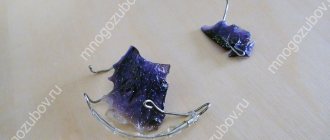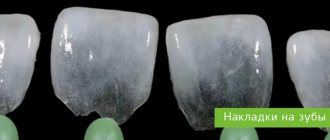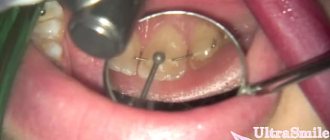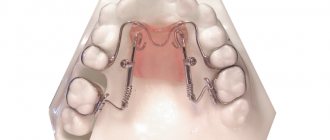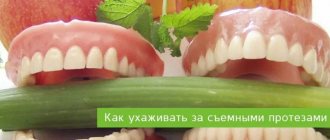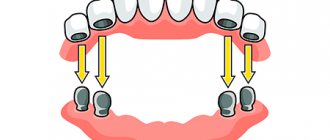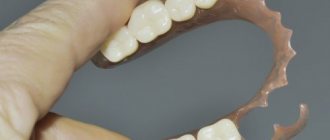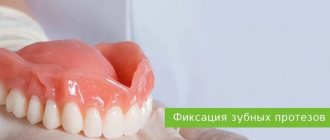Most orthodontic patients think that after removing braces, they can forever forget about malocclusion or crooked teeth and enjoy a new, gorgeous smile.
Therefore, for many patients, it comes as an unpleasant surprise to learn that on the same day that the teeth were freed from the braces system, a new structure called a retainer will come in its place.
Why are retainers needed?
At an early stage, when treatment with braces was just developing, orthodontists believed that after the correction was completed and the structure was removed, the teeth would forever remain in their new, ideal position. Unfortunately, after several months or years, most patients complained that after removing braces, the teeth gradually changed their position, and sometimes even returned to their original position, as before treatment. Many patients had to have their braces re-attached and wear them for several more years. This was especially true for people whose age at the time of correction was 20 years or older; in children, relapses were observed much less frequently.
It turned out that the reason lies in the structure of the teeth. Between the tooth and the jaw bone there are many blood vessels and ligaments. The brace, under the action of the arc, pulls the tooth to a new place, stretching the ligaments and blood vessels. The bone surrounding the tooth also gradually changes: on one side it slowly decreases, and on the other it increases. The older the patient, the longer it takes to change bone tissue , since after 30 years it is stronger and denser.
After the system is removed, no further force affects the tooth, bone, vessels and ligaments, so they begin to return to the places they occupied before treatment. It is precisely in order to prevent teeth from becoming crooked again that retainers are needed after braces .
How to properly care for devices
Removable items should be washed regularly with warm running water and cleaned with a toothbrush and toothpaste. Once or twice a week they need to be soaked in a special solution. To prepare it, you need to dissolve a tablet for dentures in a given volume of liquid and place the device in the resulting composition. Then rinse it with water.
If permanent retainers are installed after braces, then teeth are brushed as usual. Additionally, you should use irrigators, special brushes, and floss. These devices allow you to avoid the rapid deposition of plaque and stone. Toothpicks should not be used to remove food debris from under a metal wire - this will cause it to peel off.
Types of retainers
Removable retainers
There are several types of removable retainers:
- Plastic transparent mouth guards
- Metal arc
- Plate
The patient can wear removable retainers only at night or wear them during the day , this depends only on the doctor’s instructions. In any case, it is impossible to eat with such a design, therefore, if the patient must wear a retainer during the day, he needs to have a special box with him, where the retainer can be folded during meals.
How to brush your teeth with a permanent retainer?
The arch is attached to the teeth quite reliably. However, if there are shifts in the dentition or careless eating, the orthodontic retainer may come off or change its position. If this happens, immediately contact your dentist to fix it! You need to brush your teeth with the same care as always, paying special attention to the area where the arch is attached.
It is recommended to use a waterpik and gently clean the area around the retainer with a brush. Professional hygiene in the clinic will help maintain cleanliness - it will be prescribed by a doctor if necessary.
Removable raters
Probably, the plastic mouth guard has the most aesthetic appearance among all removable retainers. The product is completely transparent and invisible to others during a conversation. Unfortunately, a mouth guard, like all removable retainers, can affect diction and must be removed while eating.
If the orthodontist allows the patient to wear a mouth guard only at night, then wearing it for a very long time will not cause any discomfort and may remain a secret even to those closest to you.
Duration of retention period
The patient always wants to get rid of any structures in the mouth as quickly as possible. The orthodontist always sets the time for wearing retainers individually for each patient. The duration of the retention period depends on many factors:
- for a teenager, the period will be shorter; for an adult over 20 years old, the time of wearing orthodontic systems increases;
- after correcting the bite, the periodontal tissues should be restored; you will have to wear retainers all this time;
- the more complex the malocclusion was, the longer the retention period will last;
- The period of wearing structures directly depends on bad habits; Smokers' teeth can move quickly;
Sometimes orthodontists alternate orthodontic appliances. At the beginning of the period, the patient is fitted with a wire, and at the end of the correctional period, he is asked to wear a mouthguard that can be removed. It all depends on the characteristics of the tooth to move to the side.
Fixed retainers
To create a permanent retainer, a twisted metal wire is used, which is fixed to the back wall of the teeth. This design is very popular due to its ease of use and aesthetic appearance.
The orthodontist treats the enamel with a special agent that improves the adhesion of teeth to the composite adhesive material. The process is very quick and absolutely painless. Typically, a person who has worn braces for a long time and has become accustomed to them does not experience the slightest discomfort from installing a permanent retainer.
Installation of retainers in Moscow
Special retainers are worn after braces to create additional mechanical pressure on the dentition. It is important to immediately glue retainers, which will help fix the dental units in the desired position.
Such elements are divided into two categories:
- non-removable versions of retainers (presented in the form of a thin wire that is glued to the surface of the inside of the dentition; the dentist uses a special filling material to ensure the safety of such structures. The soul is invisible in everyday life, does not interfere with diction, and eliminates the occurrence of pain.
- removable retainers (presented in the form of a silicone mouthguard made from a personal impression of the patient’s jaw; there is the option of using retention plates, they are intended only for use during sleep).
What type of retainers to choose
Unfortunately, the patient's opinion is not taken into account when choosing a retainer. This is decided only by the orthodontist, based on the patient’s age, the condition of his teeth and many other factors that the client, without special education, is not even aware of. However, it is better to learn about the disadvantages of fixed and removable structures in advance.
Disadvantages of removable retainers:
- All removable retainers, with the exception of the mouthguard, are highly visible to others, and this makes the smile unaesthetic
- Wearing a removable retainer will likely cause increased salivation
- Affect a person's diction
- May cause irritation
- While using this design, you cannot eat, which means that every time you visit a restaurant or cafe, you need to retire to remove such a retainer and rinse your mouth. You always need to have a case with you where you can hide a mouthguard or record.
- It is necessary to carefully monitor the cleanliness of this structure
The advantages of wearing a removable design include ease of use.
Disadvantages of permanent retainers:
- The orthodontist must monitor the condition of this structure from time to time.
- There are times when such a device comes off, in such a situation you should immediately visit your orthodontist.
Perhaps, this is where all the disadvantages of permanent retainers end. Some inconveniences include the need for more careful hygiene.
The advantages of a non-removable structure include its complete invisibility to others. The patient quickly gets used to it, and even if in the initial stages of wearing it it may cause some discomfort and affect diction, then within a week all this goes away. Over time, the patient himself may forget about this device in his mouth, since the retainer is almost imperceptible.
Fixed structures
If a patient has had a complex bite corrected and a lot of money, time and patience have been spent on treatment, the orthodontist will recommend permanent retainers. This is a steel wire that is attached to the surface of the tooth from the inside. She won't bother the patient. Fixed structures are imperceptible in the mouth.
Wire retainers have a disadvantage. They get in the way when brushing your teeth, but for a patient who has worn braces or braces, this is not a problem. Once every six months, you need to visit a dentist, who will carry out a professional cleaning of your teeth, check for signs of tartar, and whether the wire is holding well.
The structure is attached to the teeth using glue. If detachment has occurred on a tooth, it cannot be ignored, especially at the beginning of the retention period. It only takes 4 days for the tooth to return to its original position. All the long work to correct the bite will be reduced to zero.
Lumineers are increasingly being used instead of wire. They are connected to each other and installed on the teeth. As a result, the patient will receive not only straight, but also white teeth. After the retention period, the lumineers are separated. They continue to remain on the teeth, giving the smile an attractive appearance.
How long to wear retainers after braces
Some patients, who were over 20 years old at the time of bite correction, are surprised to learn that they will have to wear permanent retainers for the rest of their lives. There is no need to be afraid of this, since such structures not only do not interfere with leading a normal lifestyle, but also do not have any negative consequences for the tooth. After all, no one is afraid to put and wear fillings, which can also last a lifetime, unless, of course, they fall out.
The only thing that can be recommended to a person who wears such a fixed structure is to more carefully monitor oral hygiene. Although, any patient who has been wearing braces for more than a year has most likely learned and gotten used to doing it.
When it comes to removable retainers, your orthodontist will always give clear instructions on when and how long to wear them. Most likely, in the early stages, the mouthguard or plate will need to be worn all day every day and even at night. Over time, the wearing time of these structures can be reduced and gradually eliminated.
It is possible that the orthodontist will recommend two types of retainer - a non-removable one and, for example, a mouth guard that the patient will wear every night. This combination is perhaps the most successful, as it allows you to firmly consolidate the result of treatment and at the same time has the most aesthetic appearance.
Even if the patient is not indicated to wear a retainer for life, it is impossible to say in advance how long it will be worn. Most often, this structure will need to be worn twice as long as the treatment with the braces system lasted. That is, if the patient wore braces for 2 years, then he will have to wear a retainer for at least 4 years.
Prices for services
| Retention mouthguard with rearrangement | 7500 rub. |
| Kappa, retention device | 6420 rub. |
| Retention plate | 10,000 rub. |
| Fixed wire orthodontic retainer for 1 row of teeth | 8560 rub. |
| Removing a retainer from one row of teeth | 3480 rub. |
| Fixing the retainer for 1 tooth. | 1070 rub. |
| Removing the bracket system from 1 row of teeth | 3500 rub. |
| Removal and installation of an orthodontic arch | 3430 rub. |
| Removing one orthodontic ring, bracket | 710 rub. |
Consequences of violating the terms and conditions of wearing a retainer
Visible problems from violating the rules of wearing retainers appear after a year or more
Some patients seek to reduce the time they wear a retainer and remove them earlier than expected.
Having gone without it for several weeks or months, they do not notice any special changes and finally refuse to wear it.
Visible problems arise after a year or more - the smile is no longer so flawless.
And to restore it, you will again need to order a brace system, and wear it almost as much as during the initial treatment.
Is it worth spending money and experiencing discomfort if it can be easily avoided by following the dentist’s recommendations.
Wearing a retainer beyond the established daily time and period is also undesirable. Once the bone tissue around them has formed, they do not require additional fixation.
Manufacturing and installation
The algorithm for creating a retention structure depends on its technical characteristics. In both cases, an obligatory condition is the assessment of anatomical parameters, eliminating the possibility of technical errors when choosing the shape and dimensions of the product. The standard protocol includes the following steps:
- Making a cast of the jaw row;
- Formation of a retainer based on a prototype;
- Trying on, adjusting and polishing the structure;
- Installation and care training.
The choice of a specific model depends on the medical indications obtained as a result of the examination, and also takes into account the wishes of the patient. To install a permanent retainer, one visit to the clinic is enough - as a rule, the procedure is carried out on the day the braces are removed to eliminate a long break and prevent the development of reverse processes.
Care instructions
The frequency of visits to the dental clinic during the recovery period, as well as the duration of wearing retainers, depends on the results achieved during the treatment process. The standard schedule includes visits to the orthodontist every 2-3 months. During the examination, the doctor evaluates the position of the elements of the dentition that have undergone correction, eliminates deposits that have accumulated in hard-to-reach places, and also determines the state of the microflora.
Retainer care techniques are determined by the configuration of the model used. Special means for thorough care, including brushes and irrigators, can help avoid the formation of plaque on non-removable structures. In the case of removable products, it is recommended to follow your doctor's recommendations regarding regular washing and storage of the retainer. Ignoring instructions often causes the development of inflammatory processes, as well as the deposition of tartar, which destroys the enamel.
Wearing time per day
In the table we consider the time of wearing retainers:
| Fixed | Removable | |
| 1-3 months | 24 hours a day | 22 hours a day |
| 3-6 months | 24 hours a day | 20 hours a day |
| 6-9 months | 24 hours a day | 18 hours a day |
| 9-12 months | 24 hours a day | 12 hours a day |
| 12-18 months | 24 hours a day | 8 hours a day |
| 18-36 months | 24 hours a day | 8 hours a day every other day |
Important! You should not insist on choosing a removable or non-removable retainer model. The decision about what to wear and for how long should be made by the doctor, guided by the orthodontist's condition and taking into account the patient's preferences.
